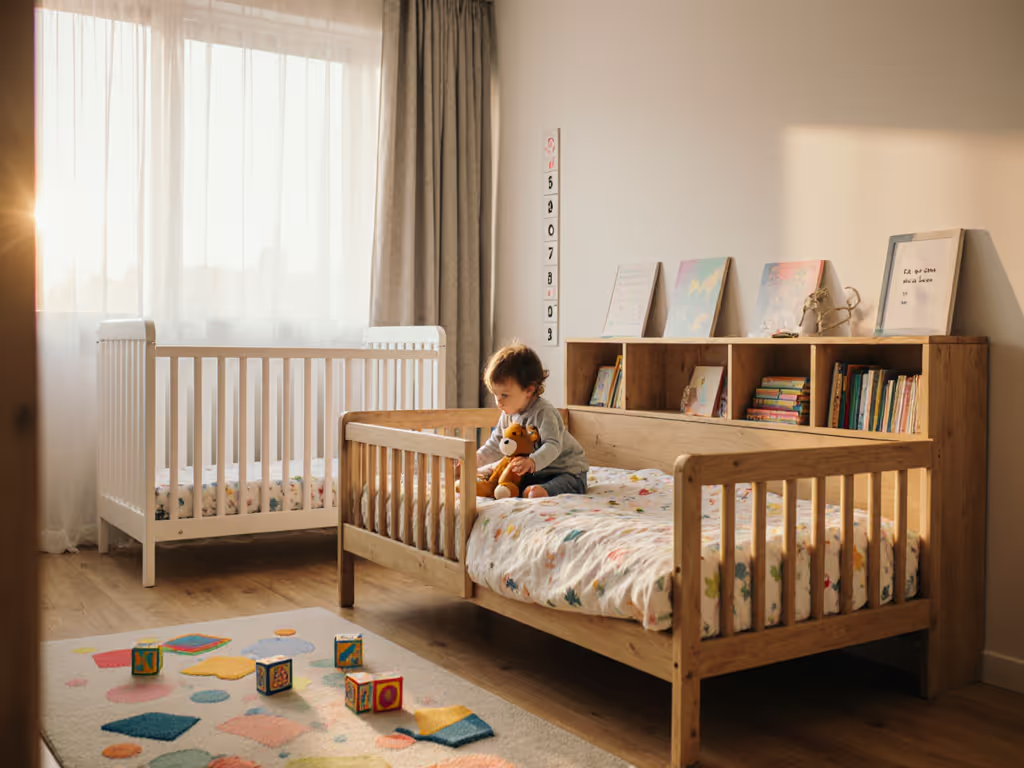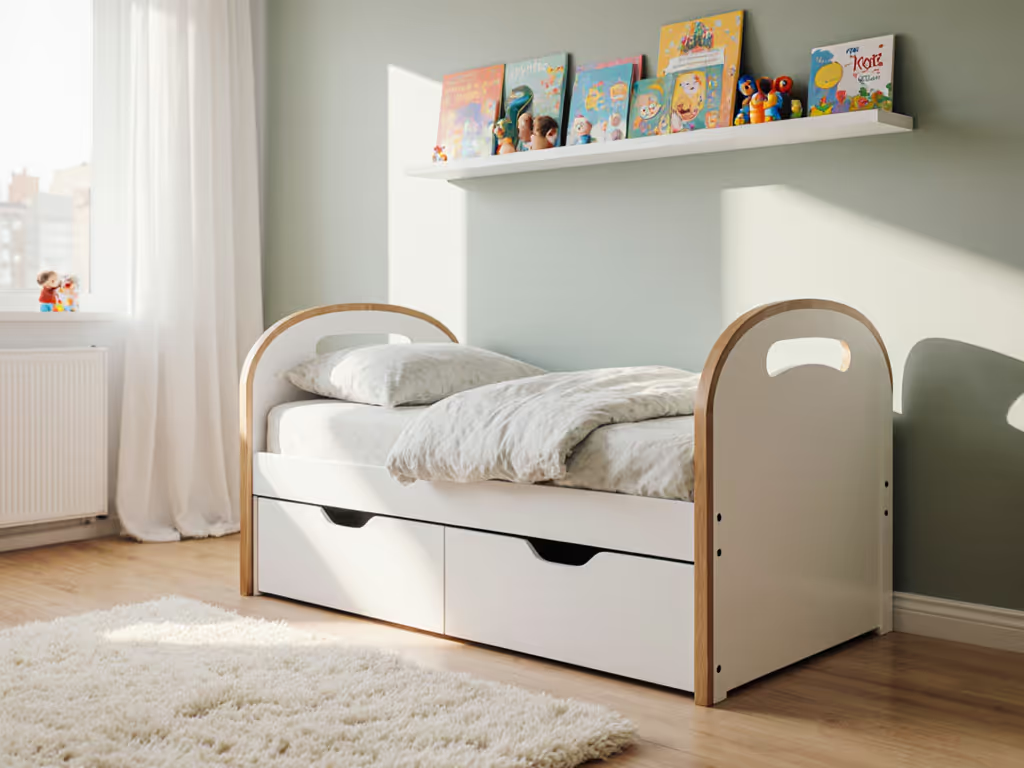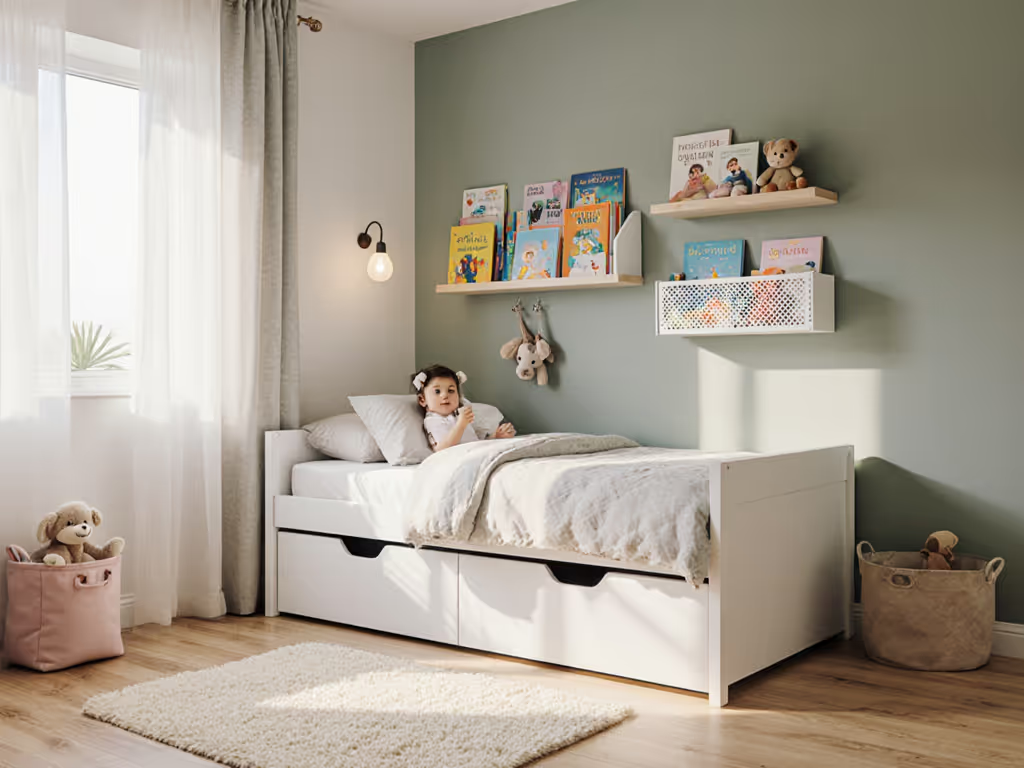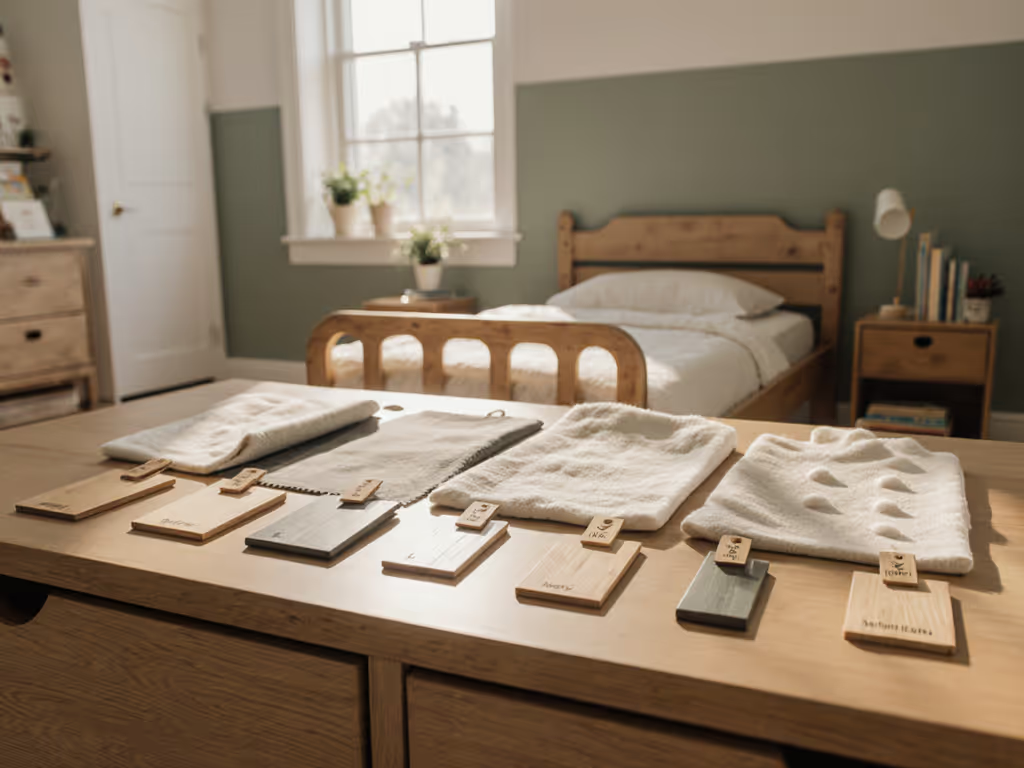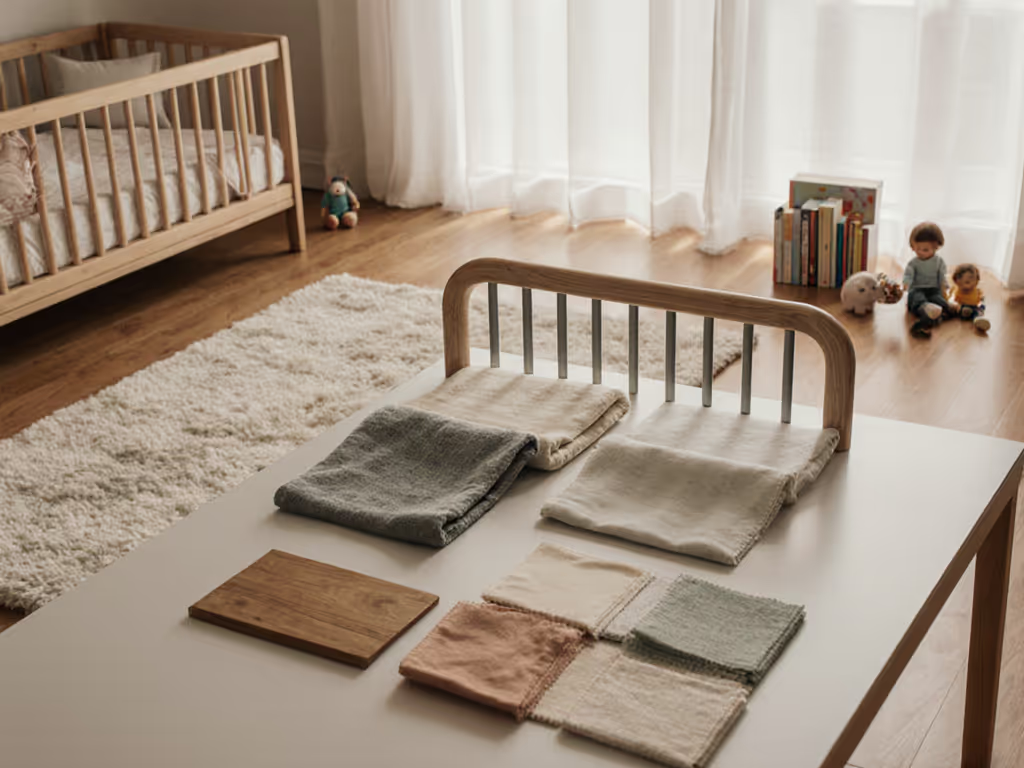
Compact Beds Explained: Benefits for Small Spaces
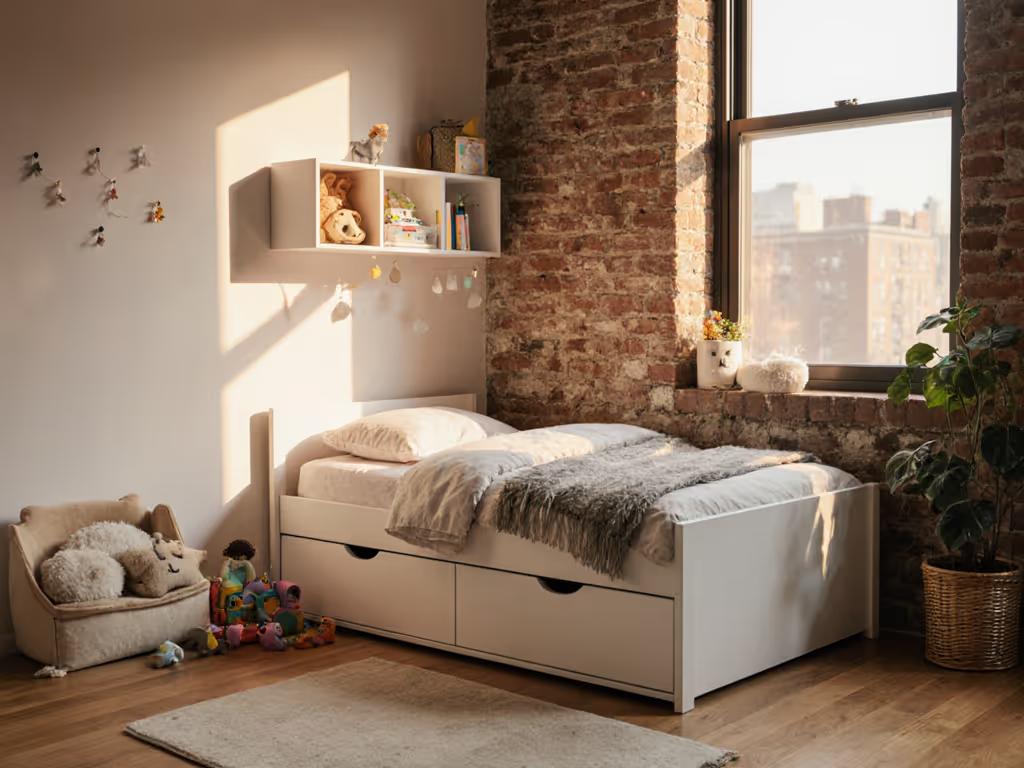
Did you know that over 30 percent of families living in cities struggle with limited bedroom space for children? Finding room for safe and comfortable sleep becomes a daily challenge when square footage is tight. Compact beds answer these needs with designs built for safety, adaptability, and efficiency, helping parents create nurturing sleep spaces even in small apartments or shared rooms.
Key Takeaways
| Point | Details |
|---|---|
| Compact Beds Optimize Space | Compact beds are designed for small living environments, helping families maximize limited space while ensuring safety for toddlers. |
| Focus on Safety Features | Parents should prioritize beds with safety certifications, low profiles, and durable materials to ensure child safety. |
| Versatile Designs are Essential | Selecting convertible or modular designs can accommodate a child's growth, providing long-term functionality and adaptability. |
| Avoid Common Selection Mistakes | Parents often overlook crucial factors like safety, stability, and fitting the bed to the child's developmental needs in their selection process. |
What Are Compact Beds and Who Needs Them?
Compact beds represent ingenious sleeping solutions designed specifically for young children navigating limited living spaces. These specialized beds are significantly smaller than traditional child beds, making them perfect for urban apartments, shared rooms, and families seeking smart space optimization strategies.
Specifically crafted for toddlers between one and a half to five years old, compact beds offer unique advantages over standard bed designs. They typically feature low-to-ground profiles and integrated safety rails, ensuring children can safely transition from cribs without risk of accidental falls. Their streamlined dimensions allow parents to maximize bedroom square footage while providing a dedicated, secure sleeping environment for growing children.
Who exactly benefits most from compact beds? Several key demographics find these innovative sleeping solutions transformative:
- First-time parents living in small urban apartments
- Families with multiple children sharing limited bedroom spaces
- Parents prioritizing safety and space efficiency
- Caregivers seeking long-term, adaptable bedroom furniture
- Households wanting flexible sleeping arrangements
By understanding compact beds as more than just furniture but as strategic living solutions, parents can create comfortable, safe sleeping spaces that grow alongside their children's developmental needs.
Types of Compact Beds for Toddlers
Toddler beds come in several versatile designs, each tailored to meet specific family needs and spatial constraints. Understanding these variations can help parents select the most appropriate sleeping solution for their young children's unique living environments.
The most common types of compact beds include standard low-profile toddler beds, which sit close to the ground and feature built-in safety rails. These beds are perfect for children transitioning from cribs, providing a secure sleeping space that minimizes fall risks. Convertible beds offer another innovative solution, designed to adapt as children grow - often transforming from infant cribs to toddler beds and eventually into full-sized youth beds, representing a long-term investment for budget-conscious families.
For families requiring maximum flexibility, several specialized compact bed options exist:
- Travel cots: Lightweight, foldable beds ideal for families who frequently move or travel
- Modular toddler beds: Beds with removable side rails that can be adjusted as children develop
- Wall-mounted fold-down beds: Space-saving solutions for extremely compact living areas
- Bunk-style toddler beds: Designed for shared rooms with multiple children
- Montessori-style floor beds: Low-profile beds promoting independence and freedom of movement
While each bed type offers unique advantages, the key is selecting a design that balances safety, comfort, and practicality for your specific family dynamics and living space.
Here's a comparison of the most common compact bed types for toddlers:
| Bed Type | Main Features | Best For |
|---|---|---|
| Low-profile toddler bed | Built-in rails<br>Near floor | Crib transition<br>General use |
| Convertible bed | Transforms as child grows<br>Multi-stage | Long-term use<br>Budget-minded |
| Travel cot | Foldable<br>Lightweight | Families on-the-go<br>Temporary use |
| Modular bed | Adjustable rails<br>Customizable | Growing toddlers<br>Changing needs |
| Wall-mounted fold-down bed | Space-saving<br>Folds away | Ultra-compact spaces |
| Bunk-style toddler bed | Stacked beds<br>Space for two+ kids | Shared rooms<br>Siblings |
| Montessori floor bed | No frame<br>Child independence | Promoting mobility<br>Self-exploration |
Space-Saving Features and Room Versatility
Compact beds are engineering marvels of modern parenting, designed to transform small living spaces into functional, comfortable environments for growing children. These innovative sleeping solutions go far beyond traditional bed designs, incorporating ingenious space-saving features that maximize every square inch of available room.
One of the most remarkable space-saving strategies involves multi-functional bed designs. Loft beds, for instance, elevate the sleeping area, creating valuable usable space underneath for desks, play zones, or additional storage. Some beds feature built-in drawers, shelves, and compartments that eliminate the need for separate furniture, effectively turning a single piece of furniture into a comprehensive storage and sleeping solution for children's rooms.
Key space-saving features that make compact beds exceptional include:
- Integrated storage compartments underneath mattress areas
- Modular design allowing reconfiguration as children grow
- Fold-away and collapsible frames for ultimate flexibility
- Vertical space utilization through elevated sleeping platforms
- Convertible configurations that transform with changing family needs
By thoughtfully selecting beds with intelligent design features, parents can create dynamic living spaces that adapt seamlessly to their children's evolving requirements, proving that limited square footage never means compromising on comfort or functionality.
Safety, Durability, and Material Considerations
Child bed safety represents the most critical consideration for parents when selecting a compact sleeping solution. Modern toddler beds are engineered with precise design standards that prioritize preventing accidental injuries, incorporating low-to-ground profiles and strategically placed side rails to minimize fall risks and ensure maximum protection during a child's vulnerable sleeping hours.
The materials used in compact beds play a pivotal role in both safety and long-term durability. Non-toxic, sustainable materials like solid hardwoods, medical-grade plastics, and eco-friendly composites offer parents peace of mind. These materials must withstand constant use, potential rough handling, and resist potential chemical leaching, ensuring the bed remains a safe environment throughout a child's developmental stages.
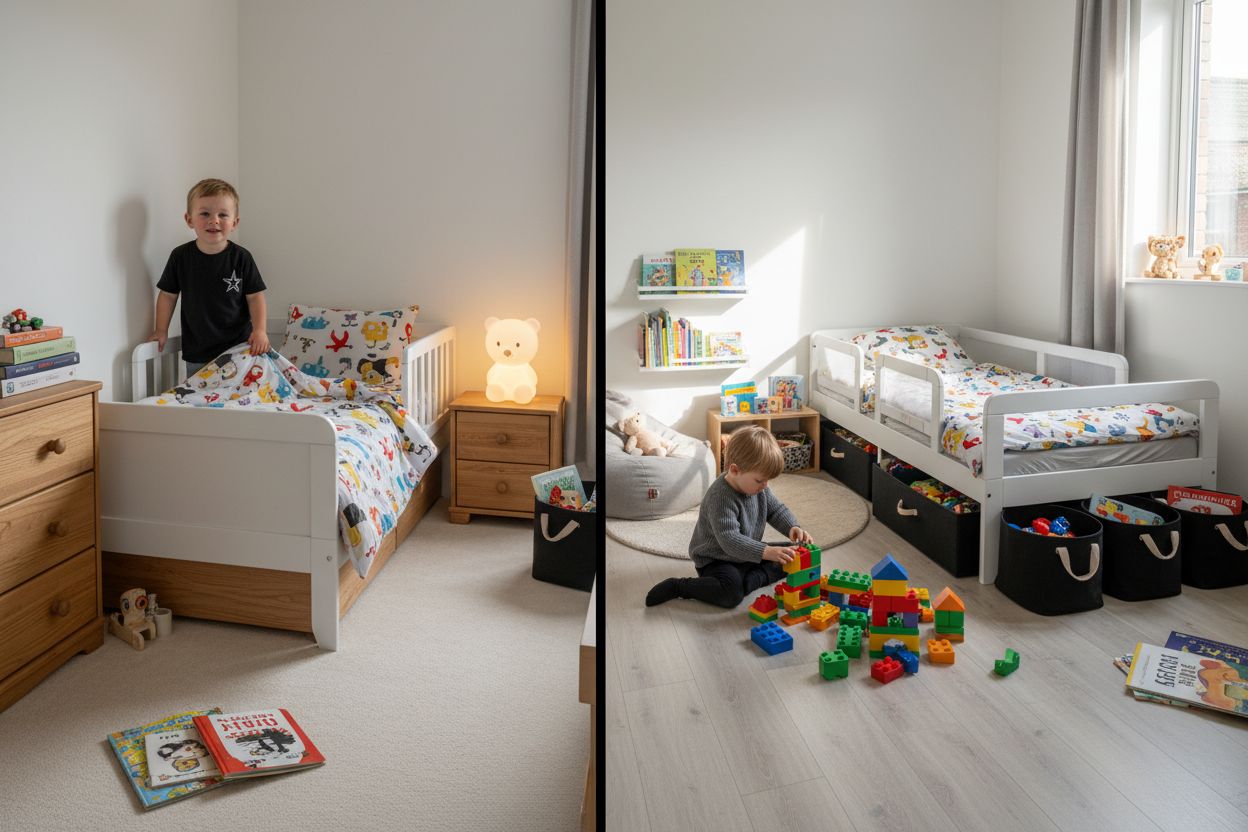
Key safety and durability considerations include:
- Rounded edges to prevent potential injury points
- Low-profile design minimizing fall distances
- Robust construction that supports active toddler movements
- Non-toxic finishing materials free from harmful chemicals
- Seamless joint construction preventing potential entrapment zones
- Weight-tested frames supporting dynamic child growth
By prioritizing beds that balance intelligent design, high-quality materials, and comprehensive safety features, parents can create a secure sleeping environment that grows alongside their child's evolving needs.
Comparing Compact Beds to Standard Toddler Beds
Compact beds represent a strategic evolution in children's sleeping solutions, offering distinct advantages over traditional toddler bed designs. While standard toddler beds typically follow a one-size-fits-all approach, compact beds are engineered with precision to address the unique challenges of modern family living spaces, particularly in urban environments with limited square footage.
The primary differences become evident when examining design philosophy and functional capabilities. Standard toddler beds often consume significant room space and lack adaptability, whereas compact beds are meticulously designed to maximize functionality. These innovative sleeping solutions incorporate intelligent features like modular configurations, integrated storage, and transformative designs that can adapt as children grow, effectively serving multiple purposes beyond simple sleeping arrangements.
Key comparative aspects between compact and standard toddler beds include:
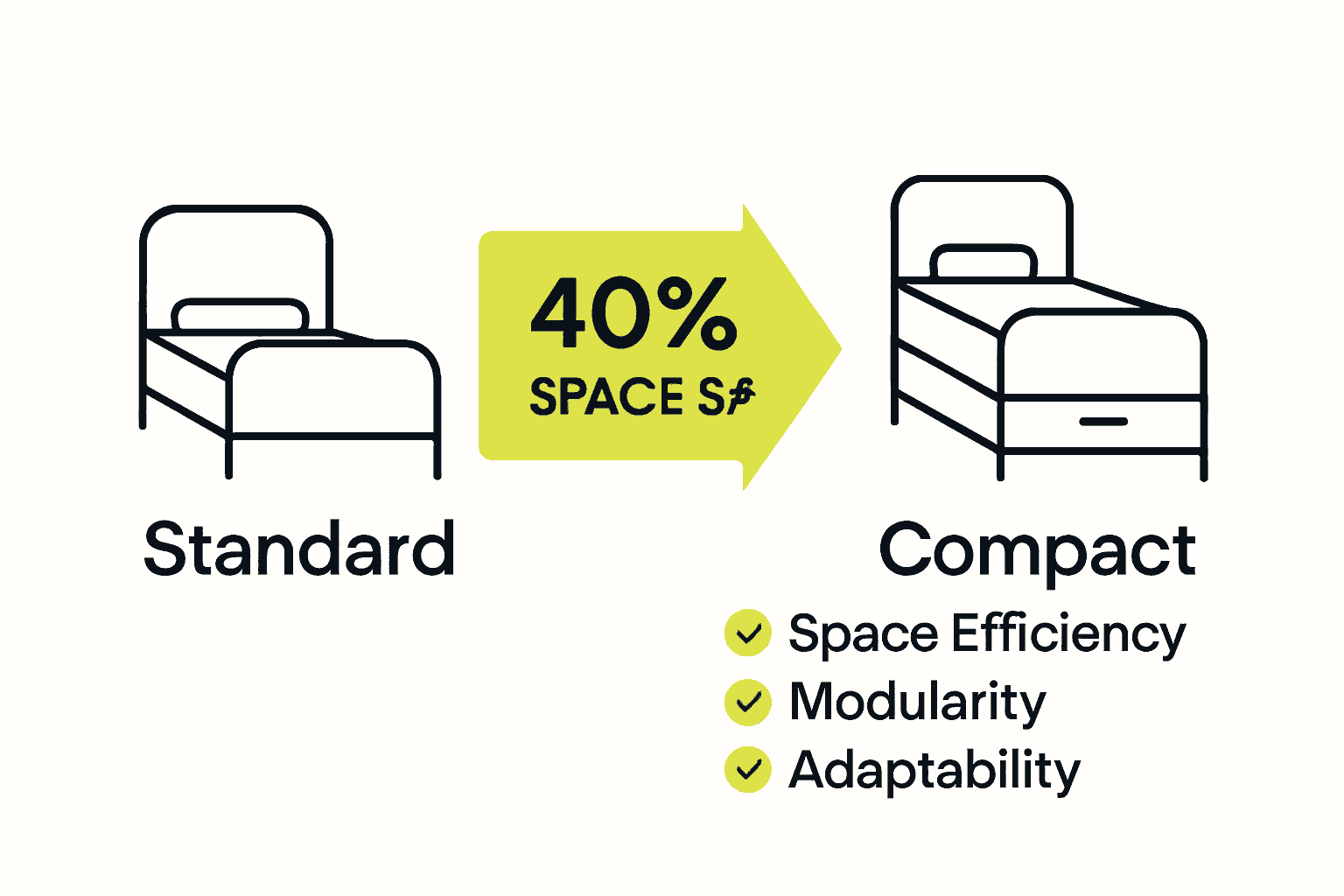
- Space efficiency: Compact beds reduce floor space requirements by up to 40%
- Versatility: Modular designs offer multiple configuration options
- Storage integration: Built-in compartments eliminate need for additional furniture
- Adaptability: Can transform as child's needs change
- Material innovation: Often constructed with more sustainable, lightweight materials
- Cost-effectiveness: Long-term value through multiple developmental stages
Ultimately, compact beds represent more than just a sleeping solution - they are a strategic investment in flexible, intelligent home design that grows alongside your child's evolving needs.
Common Mistakes When Choosing Compact Beds
Bed selection for toddlers involves more complexity than most parents initially realize. Many families unknowingly make critical errors when choosing compact beds, often prioritizing aesthetics or price over fundamental safety and developmental considerations that can significantly impact their child's comfort and well-being.
One of the most prevalent mistakes is neglecting to consider the child's specific developmental stage and individual needs. Parents frequently select beds based on appearance or temporary convenience, overlooking crucial factors like appropriate rail height, mattress firmness, and adaptability. Rushed decisions can lead to beds that become obsolete quickly or fail to provide the necessary support for a growing child, resulting in unnecessary additional expenses and potential safety risks.
Critical mistakes parents commonly make include:
- Ignoring safety certifications and standard compliance
- Overlooking bed dimensions relative to room space
- Choosing non-adjustable designs that cannot grow with the child
- Prioritizing cost over quality and long-term durability
- Neglecting material safety and potential chemical treatments
- Failing to test bed stability and structural integrity
Successful compact bed selection requires thoughtful consideration, balancing immediate needs with future growth, and understanding that the right bed is an investment in your child's safety, comfort, and developmental journey.
Discover the Perfect Compact Bed for Your Small Space Needs
Struggling to find a toddler bed that fits safely and comfortably in your limited living space? The challenges of transitioning your child from a crib to a secure sleeping environment without sacrificing room versatility can feel overwhelming. With key factors like low-profile designs, integrated storage, and adaptability for growth, compact beds offer practical solutions that address safety, durability, and space-saving needs simultaneously.
At City Toddler Beds, we understand these concerns deeply. Our expert guides and carefully curated insights empower first-time parents to make informed decisions about the best compact beds that maximize floor space and promote your child’s independence while ensuring safety compliance. Ready to transform your child’s bedroom into a functional, cozy haven that grows with them? Explore our comprehensive resources at City Toddler Beds and start designing a smarter sleeping space today.
Frequently Asked Questions
What are compact beds and what are their advantages?
Compact beds are smaller sleeping solutions designed specifically for young children, particularly in limited living spaces. They offer benefits like enhancing safety with low-to-ground designs, maximizing room space, and providing a more secure sleep environment as children transition from cribs.
Who can benefit from compact beds?
Compact beds are ideal for first-time parents in small urban apartments, families with multiple children sharing limited space, caregivers seeking long-term adaptable furniture, and households that prioritize safety and flexibility in sleeping arrangements.
What types of compact beds are available for toddlers?
Common types of compact beds include low-profile toddler beds, convertible beds that grow with the child, travel cots for on-the-go families, modular beds that allow customization, wall-mounted fold-down beds for ultra-compact spaces, bunk-style toddler beds for shared rooms, and Montessori-style floor beds that promote independence.
How do compact beds differ from standard toddler beds?
Compact beds maximize space efficiency and design versatility, often integrating features like storage compartments and modular configurations. In contrast, standard toddler beds are typically larger and lack adaptability. Compact beds can serve multiple purposes as children grow, making them a more strategic choice for modern living environments.

![BEST MONTESSORI FLOOR BEDS [+ How To Choose!]](https://i.ytimg.com/vi/H4_-6JgZoEE/hqdefault.jpg)
